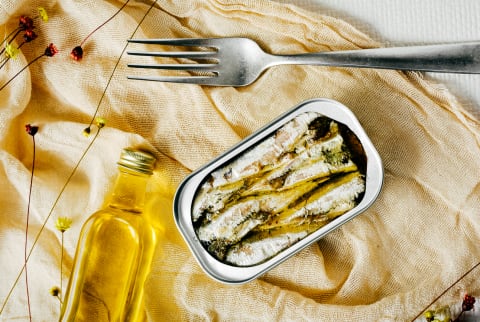The Underrated, Anti-Inflammatory Canned Food This RD Craves Daily
Do you have these stocked in your pantry?

Image by Juan Moyano / Stocksy August 18, 2025 It's been nearly a year since people started stocking up on toilet paper, hand sanitizer, and canned goods to prepare for an unknown amount of time in lockdown. While that scarcity mindset may have subsided, nonperishable foods have been, and always will be, a pantry staple. "I really love sardines," Cording answers. "I first discovered them through a random craving when I was under a lot of stress and suddenly wanted to eat them all the time." 
Benefits of sardines
Not only are tinned fish an affordable source of protein, but they're also sustainable and don't require any preparation or cook time. Adding tinned fish to your diet provides plenty of health benefits, as well.
Tinned sardines tend to be lower in mercury than many other types of fish and are considered one of the "best choices," in terms of seafood1, according to the U.S. Food and Drug Administration (USDA).
"My personal favorite is the boneless variety packed in olive oil," Cording says. "If you like a little crunch, the kind with the bones still in is great."
While sardines packed in oil may have a bit more flavor, the variety in water is still a good source of nutrients. "In both cases, you're getting a good amount of protein, vitamin D, and anti-inflammatory omega-3 fatty acids—and the olive oil provides heart-healthy monounsaturated fats," she explains.
How to eat sardines
The USDA guidelines recommend eating two to three servings of low-mercury fish, like sardines, per week. They're delicious in pasta dishes, with cheese and crackers, or as a snack straight out of the can. "I like to mash the sardines with a fork and toss them into a salad," Cording tells mbg.
Bottom line
Whether you're following a pescatarian diet or simply looking for more affordable, sustainable, and shelf-stable sources of protein, adding canned sardines to your grocery list is a great starting point.

 Aliver
Aliver 
































